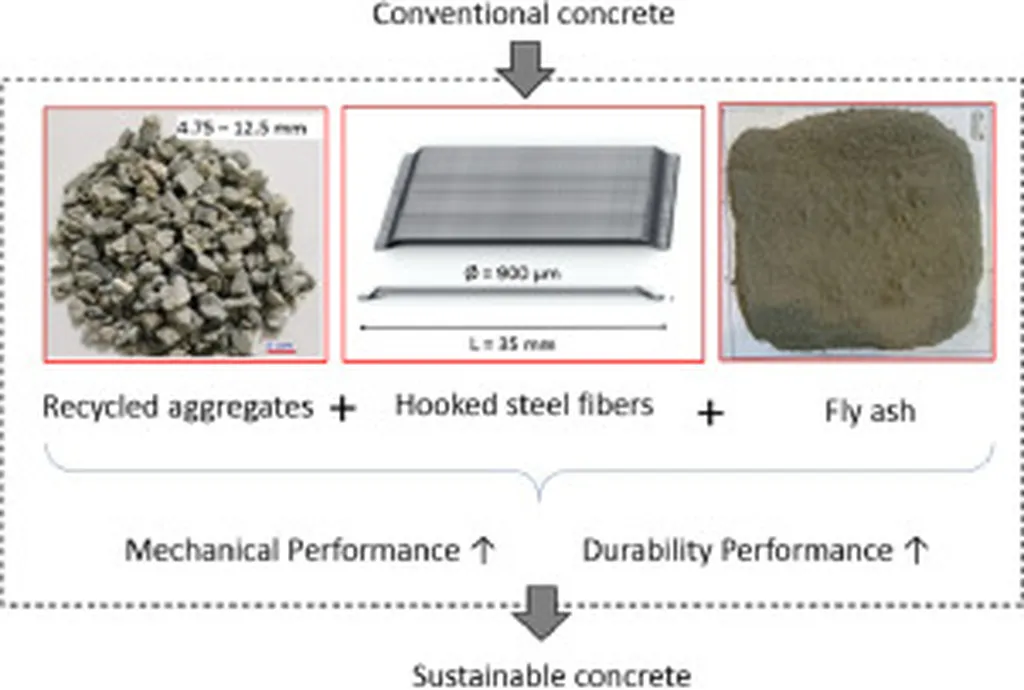In the quest to bolster the strength and durability of construction materials, researchers have turned to an unlikely ally: fly ash, a byproduct of coal combustion. A recent study led by Yuliang Qi from the Guangzhou Research Institute of Construction Industry Co., Ltd, has unveiled promising insights into enhancing the mechanical properties of cement mortar using fiber reinforcement and fly ash. The findings, published in the journal *Materials Research Express* (which translates to “Materials Research Express” in English), could have significant implications for the energy sector and construction industry.
Fly ash, often considered a waste material, has been found to improve the workability of mortar, reduce the water-binder ratio, and enhance mechanical properties. However, the study revealed a delicate balance: while fly ash initially boosts performance, excessive amounts can lead to severe carbonation, compromising the structural integrity and strength of the mortar. “The optimum content of fly ash was determined to be 4.45 wt%,” Qi noted, highlighting the precision required in its application.
The research explored the effects of three types of fibers—basalt, carbon, and high-silica—on the mortar’s structure and mechanical properties. Each fiber type offered unique advantages. Basalt fiber, for instance, showed poor dispersion uniformity, while carbon fiber demonstrated the best interface bond strength with the mortar matrix. “The reinforced mortar incorporating carbon fiber exhibited a 28-day flexural strength of 18.0 MPa, compressive strength of 109.8 MPa, and elastic modulus of 47.5 GPa,” Qi explained, underscoring the potential of carbon fiber reinforcement.
The study’s findings suggest that the optimal addition amounts of basalt fiber, carbon fiber, and high-silica fiber are 0.3 wt%, 0.6 wt%, and 0.3 wt% respectively. These enhancements could lead to more robust and durable construction materials, reducing maintenance costs and extending the lifespan of structures.
For the energy sector, these advancements are particularly relevant. As the industry increasingly focuses on sustainability and efficiency, the use of fly ash—a byproduct of coal combustion—offers a circular economy approach, repurposing waste material to enhance construction materials. This not only reduces waste but also lowers the environmental impact of construction projects.
The research also opens doors for future innovations. As Qi’s team continues to explore the interplay between fly ash and fiber reinforcement, the construction industry can look forward to even more resilient and sustainable materials. The study’s findings, published in *Materials Research Express*, provide a solid foundation for further research and development in this field.
In an industry where durability and strength are paramount, this research offers a glimpse into the future of construction materials. By leveraging the unique properties of fly ash and fiber reinforcement, the construction industry can achieve greater efficiency, sustainability, and cost-effectiveness. As the energy sector continues to evolve, these advancements will play a crucial role in shaping the future of construction.

